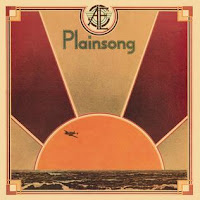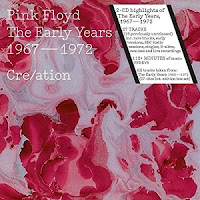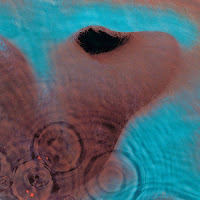Pink Floyd Atom Heart Mother (CD, Harvest Records, 1970) *** Pink Floyd Meddle (Vinyl, Harvest Records, 1971) *****
Pink Floyd Live at Pompeii (DVD, Universal Studios, 1971/2003) ****
Pink Floyd Obscured By Clouds (Vinyl, Harvest Records, 1972) ***
Pink Floyd The Dark Side of the Moon (Vinyl and CD, Harvest Records, 1973) *****
Pink Floyd Wish You Were Here (Vinyl, Harvest Records, 1975) *****
Pink Floyd Animals (CD, Harvest Records, 1977) ****
Pink Floyd The Wall (CD, Harvest Records, 1979) ***
Genre: Prog rock
Places I remember: Fives, Chaldon Books and Records, JB Hi-Fi, George Courts on K Rd, DJ Records, Real Groovy Records
Fab, and all the other pimply hyperboles: Fat Old Sun (Atom Heart Mother)
Gear costume: Us and Them (The Dark Side of the Wall), Wish You Were Here
They loom large in his legend (The Album Collection playlists): Part 1; Part 2; Part 3; Part 4; Part 5
Active compensatory factors: In hindsight the Pink Floyd albums of the early seventies were gearing up for Dark Side of the Moon, but in real time (the way these blogposts roll) the band was continuing with their idiosyncratic experiments.
Atom Heart Mother has a side long orchestrally inclined title song and then a side of solo songs like Ummagumma. The final track (Alan's Psychedelic Breakfast) is part of a rich tradition by this point. I like the album - and not just because of the majestic David Gilmour highlight - Fat Old Sun.
Meddle is their first post Syd album to feature a uniform tone and some brilliant songs. Echoes takes up a whole side and has become a stone-cold classic in their oeuvre.
The album cover is again, brilliant. Sound and visuals were important to the Pink Floyd experience right from the start. The film showing them in the studio and in concert from 1966/67 (Tonite let's all make love in London) shows the psychedelic light show and slide projection used to accompany the music. They continued the music/visual enhancement tradition throughout their career.
So, it's appropriate to also include the DVD Pink Floyd Live at Pompeii in this countdown. It begins and ends with Echoes. I love the way Rick Wright and David Gilmour's vocals blend together. It's great having the visual aspect to augment the song.
Visuals and songs combine again for Obscured By Clouds as it doubles as a soundtrack to La Valee - another film by Barbet Schroeder. It's a nice interlude between Meddle and their next big album (that's an understatement, as The Dark Side of the Moon became one of the biggest albums of all time).
I don't really hear too many similarities between those three albums. Obscured by Clouds is like More - a song centric collection of sounds - often acoustic in nature.
I bought The Dark Side of the Moon on the day of release in New Zealand (so it's a rare NZ first pressing) and I can remember sitting in mum's car looking at the cover and the posters. I've lost count how many times I've listened to it but it remains a wonderful piece of music with some amazing songs. It's now gone beyond being a music album, and become a cultural artifact in the years since its release.
It took a few years to produce a follow up but kudos to the band - when they did, it was another classic.
Wish You Were Here contains the homage to Syd - Shine On You Crazy Diamond, to bookend the album. For a bunch of guys who are not the best communicators (check out the interviews on Live at Pompeii), they deliver their love for Syd via this song superbly. Unexpectedly, there is a real warmth and spirit of comradery communicated on the album via music.
Elsewhere, Roger Waters' trademark cynicism surfaces (Have A Cigar, Welcome to the Machine), but at this stage, it's still dressed up in some catchy songs, so he's not yet an insufferable bore on such things (I'm not a fan of his solo work).
Animals came as something of a surprise, in that it's loosely based on Orwell's Animal Farm. It ends up an interesting album but Roger Waters' bleak view of the world means there is a new layer of darkness and bitterness that wasn't present to this extent previously.
Still - the sheep end up beating the dogs (somehow), and, even though there's not much for Rick to do, the album is full of David Gilmour's terrific penetrating guitar sounds, so all is not (yet) lost! He sounds angry! Maybe the punk movement did have an effect on this album after all.
Which brings us to The Wall - their final album of the seventies. I've never been a fan!
When it came out I was working part time at Marbecks Records in The Queen's Arcade. Roger Marbeck was running the pop store and he bought a ton of this album and consequently played it a lot in the store. It sold tons too, so he wasn't wrong, but I got so sick of hearing the first side.
It's definitely Roger's baby and as such he sings in a snidey way that I'm not that keen on. It was at this point that I started gravitating to David Gilmour's PF, rather than Roger's PF. Hence, I bought and quickly sold The Final Cut.
Where do they all belong? So, next up is the eighties Pink Floyd led by David Gilmour.

















%20(1).jpg)



.jpg)

.png)

